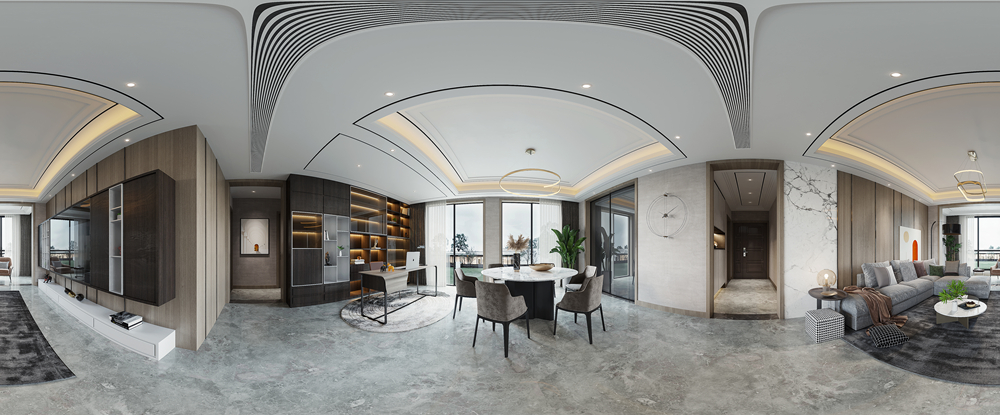
Captivating Panorama Photos: A Window to Expansive Visual Worlds
In the realm of photography, panorama photos stand out as a powerful medium for capturing the vastness and beauty of a scene. These wide - angle images have the unique ability to transport viewers to a particular place, allowing them to soak in the entirety of a landscape, a bustling cityscape, or an intricate interior.

The Allure of Panorama Photos
Panorama photos are more than just extended snapshots. They offer a comprehensive view that goes beyond what a standard photograph can capture. For instance, a panorama of a mountain range can showcase the entire sweep of peaks, from the snow - capped summits to the foothills below. The continuous expanse of the image gives a sense of scale and grandeur that is often lost in regular photos. In a city panorama, one can see the flow of traffic, the layout of buildings, and the dynamic energy of urban life all at once. This ability to present a holistic view makes panorama photos incredibly engaging.
Techniques for Capturing Panoramas
There are two primary methods for taking panorama photos. The first is using a specialized 360 - degree camera. These cameras are equipped with multiple lenses that capture a wide field of view. For example, the Ricoh Theta series has two fish - eye lenses that work in tandem to record a spherical image. The camera's internal processing unit then combines the images from these lenses, corrects for distortion, and stitches them together to form a seamless 360 - degree panorama.
The second method is more accessible for those with a regular digital camera. Photographers use a tripod and a panoramic head to take a series of overlapping photos. The key is to ensure about 30 - 50% overlap between each shot. This overlap provides the necessary data for stitching the images together later. When photographing a beach, one might start at one end and take a sequence of photos, each with a partial view of the adjacent area. The camera settings, such as aperture, shutter speed, and ISO, should be kept consistent throughout the shoot to maintain a uniform look.
Post - Processing Panorama Photos
Once the photos are captured, post - processing is often required to create a polished panorama. Specialized software, like zippano, is used to stitch the images together. These programs use advanced algorithms to analyze the overlapping regions of the photos. They detect common features, such as edges, corners, and unique textures. In a set of photos of a forest, the software might identify the edges of tree trunks, the corners of rocks, or the patterns on leaves. By comparing these features across all the images, the software calculates the relative position and orientation of each photo, aligning them precisely. After alignment, the software blends the overlapping areas, adjusting the color, brightness, and contrast to create a smooth transition between the stitched images.
Applications of Panorama Photos
Panorama photos have a wide range of applications. In the tourism industry, they are used to promote destinations. A panorama of a tropical island with its white - sand beaches, clear blue waters, and lush greenery can entice travelers to visit. Real estate agents use panorama photos to showcase properties. A virtual tour of a house, created using panorama photos, allows potential buyers to explore the layout and the different rooms in detail. In the field of journalism, panorama photos can be used to document large - scale events, such as a music festival or a political rally, giving readers a better sense of the atmosphere and the scale of the gathering.
Panorama photos offer a unique and immersive visual experience. Whether it's the breathtaking beauty of a natural landscape or the vibrant energy of an urban scene, these photos have the power to captivate and inspire. With the right techniques and tools, anyone can start creating their own stunning panorama photos and share the world from a broader perspective.